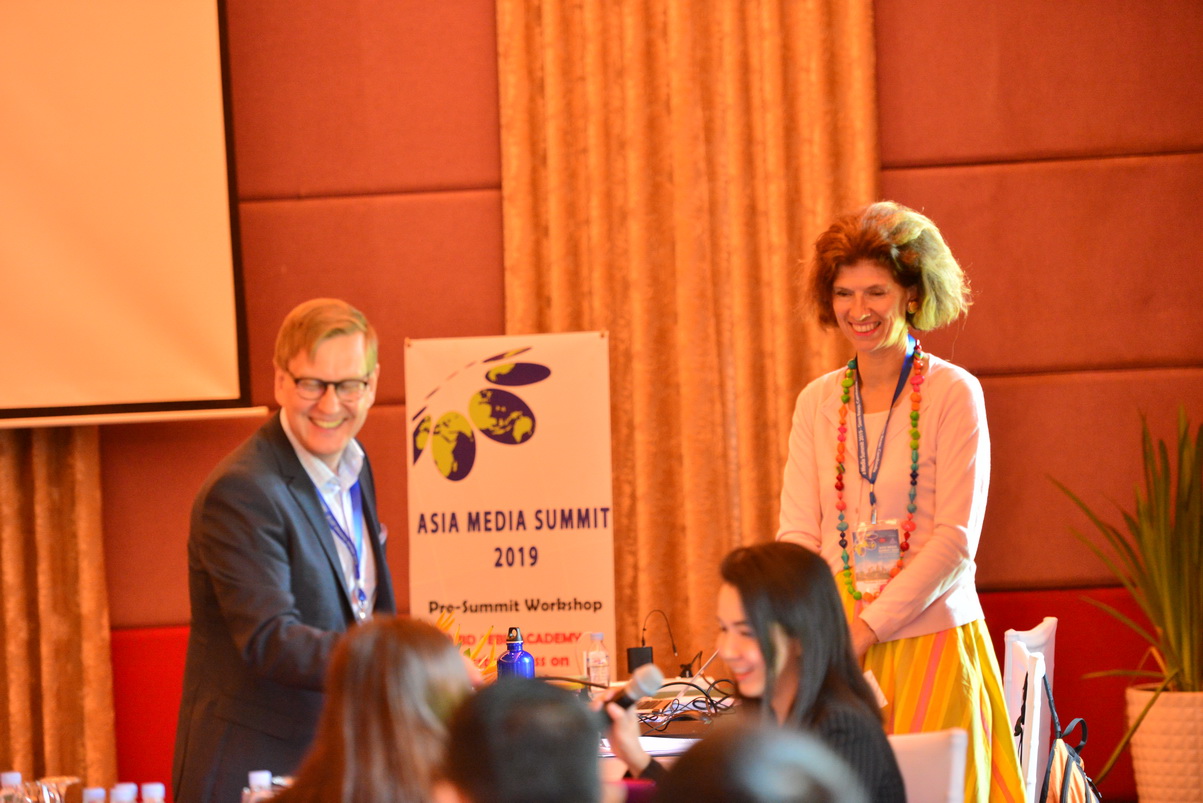Mr Steve Ahern, Chief Executive Officer of AMT Consultancy Pty Ltd, Australia, talked on creating compelling new media content that starts with unlocking one’s creativity.
“Creative people never accept the first answer and think of lots of alternatives”, Mr Ahern told participants attending the AIBD/Radiodays Pre-Summit Workshop on Creating Impactful Content in the Digital Era held in Siem Reap, Cambodia on 11 June 2019.
In his presentation, Mr Ahern urged broadcasters “to clear their mind from the daily grind, forget their business and focus more on the customers”.
He said it is important to find out what the customers’ problem is and how this can be solved.
In unlocking one’s creativity, Mr Ahern also suggested to keep drawing and doodling.
In writing, he told broadcasters to just start writing, even if this is rubbish until the right thing comes.
“Go for a walk and think about the idea first… don’t sit and type. Use a stimulus… capture first words”, he said.
He also said that when thinking creatively these days, broadcasters must think across all platforms.
Identifying Audience Needs for Impactful Content
Another speaker was Ms Gemma Hayman, Country Director, BBC Media Action Plan, Cambodia, who spoke about the production of impactful content to achieve positive human development outcomes.
She presented two case studies in Cambodia that use media and communication for this purpose. These are ‘Klahan9’ that uses social media to improve young people’s employment prospects, and the other is ‘Neighbours Together’ which helps build resilience to the effects of climate change.
Both programmes are supported by BBC Media Action Plan and the Swedish government, in partnerships with local NGOs, media and government.
In her presentation, she cited the importance of both quantitative and qualitative research to understand audience needs to be able to produce impactful content in specific media platforms.
“ We go beyond providing information. We want to know how people feel and think so that we can help them change behaviour”, Ms Hayman said.
At the end of the workshop, participants shared their takeaways from the presentations and discussions.
About 20 participants from Asia Pacific attended this one day workshop.
Unlocking One’s Creativity to Produce Impactful Content
Mr Steve Ahern, Chief Executive Officer of AMT Consultancy Pty
Journalists Should Do More to Verify Content Amid Disinformation
Journalists need to do a lot more to verify and
Building Leadership Skills to Meet Demands of the 4th Industrial Revolution
Building strong leadership skills among media executives is key to
Media Executives Urged to Craft Future Winning Strategies
Ms Nathalie Labourdette, Head of the European Broadcasting Union (EBU)
AIBD/ IPPTAR In-Country Worskhop on Fake News
Fake News: How Do You Know Which Is REAL or FAKE? Fake News
AIBD/UNESCO – IPDC Regional Workshop on ‘Addressing Gender Bias in Media’
Nineteen participants from Bangladesh, Bhutan, Nepal, Laos, Malaysia, Maldives, Myanmar,
AIBD In-Country Workshop on Marketing & Commercialisation
AIBD In-Country Workshop on ‘Marketing and Commercialisation’ was held in
Broadcasting in the Age of New Media: Opportunities for Programme & Technical Personnel
The new age platforms in media industry bring a paradigm
Climate Change Reporting Via Traditional & New Media
Typhoon 'Hato' and typhoon 'Mangkhut' that hit Macao in 2017
Workshop on Engineering Fundamentals for Broadcasters from 03 to 07 December 2018 at Kuala Lumpur Malaysia
Asia-Pacific Institute for Broadcasting Development (AIBD) in collaboration with the




